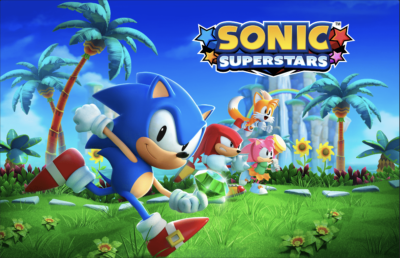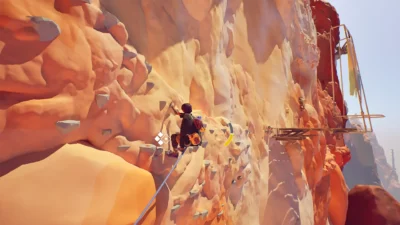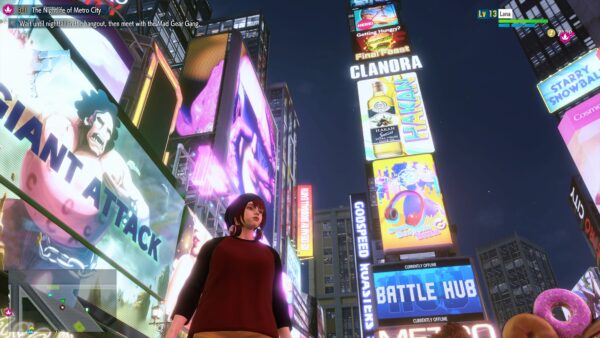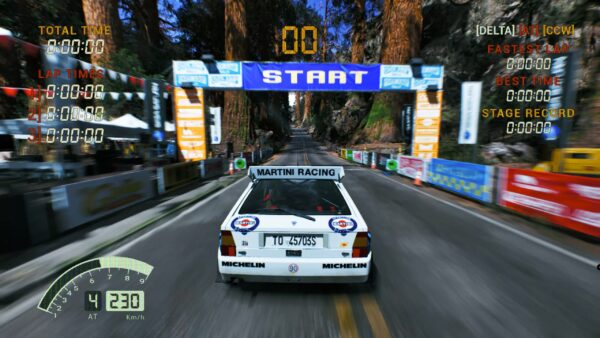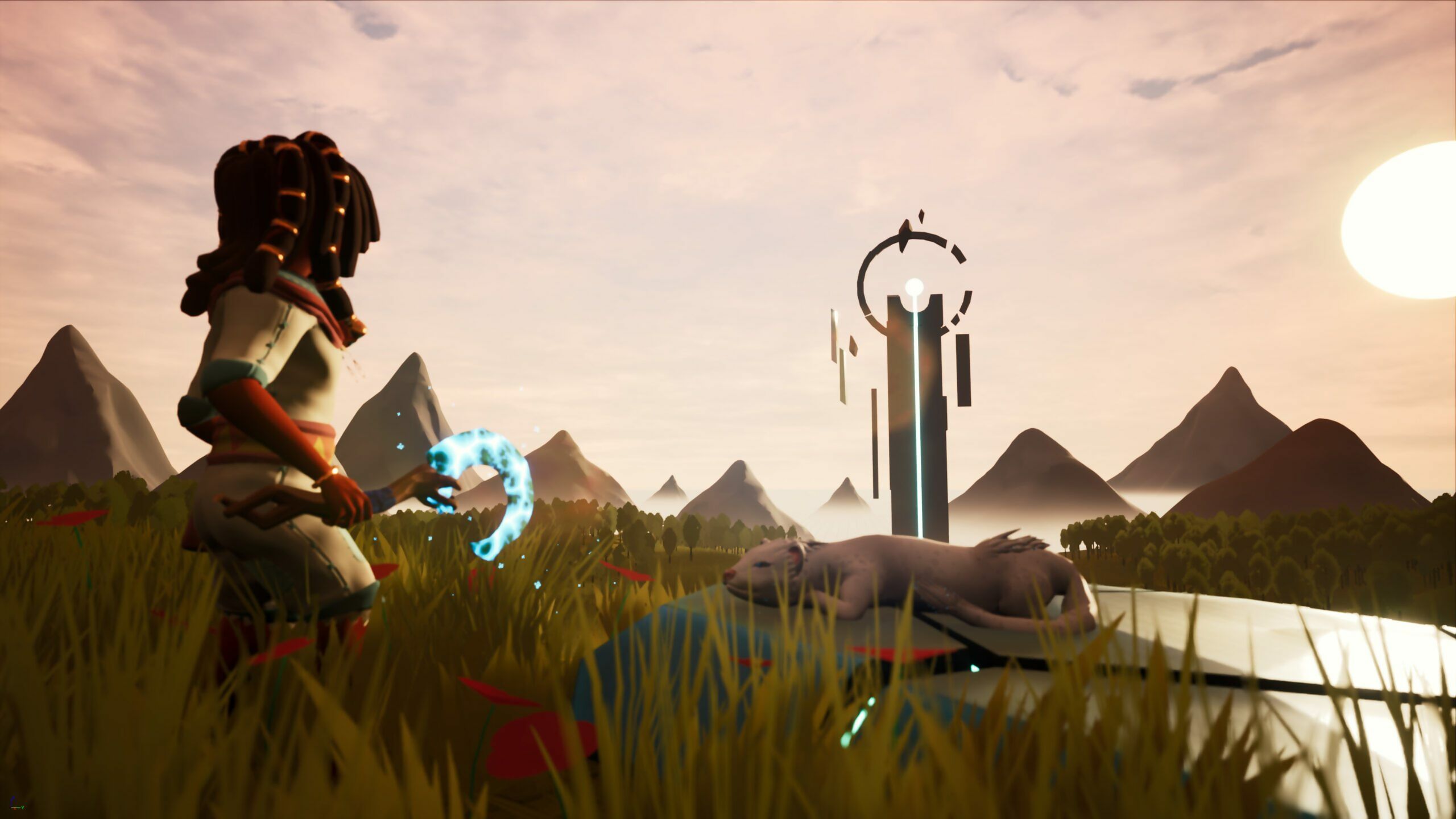
An ongoing project at the University of Huddersfield, Canalside Studios sees a team of game design students come together as part of their course to create and release a game.
This year’s effort is one Mira’s Tale, a platformer leaning heavily on a grappling-hook gimmick and, frankly, a game that looks better than you might expect from a team of eight students (and the tutors who manage the studio).
Mira – she of titular fame – is tasked with saving her family and village from an ancient curse she herself has unwittingly released on them. It’s your typical fantastical adventure fare from a storyline perspective, and it’s backed up by a decent set of mechanics: you run, jump, climb, and glide around environments, solving light puzzles along the way and making heavy use of that grappling-hook to get around.
One factor that stands out is how this young team is attempting to bolt on additional challenges for more experienced players – this is no throwaway half-baked thing, instead offering more difficulty for those who might find the regular action a bit on the easier side.
“We’ve tried to hit two birds with one stone here,” explains Josh Pritchard, one of the student developers. “[There’s] a fun set of mechanics for those more experienced in games, accompanied by a story that allows people who haven’t played so many games before to get just as much out of the game as anyone else would.”
That desire for complexity wasn’t there from day one, with an awareness that what became Mira’s Tale would need some strict limitations in place right from the off: “With only one C++ developer, we couldn’t pick anything too complex,” says Pritchard, “but we also wanted to pick something to showcase the abilities of all our artists.”
 1_.jpg” alt=”” width=”1920″ height=”1080″ />
1_.jpg” alt=”” width=”1920″ height=”1080″ />While inherently terrifying in that they’re not like any spiders we’ve ever seen before, these little blighters do have one thing going for them: they’re not spiders.
The decision for a platformer with traversal mechanics came soon after, and Mira’s Tale was born. A pretty straightforward genesis for any gaming project, sure, but one with a background of lazy jokes about students, drinking, and any number of tired Young Ones references littered through a preview.
Oh, but wait… “The most important thing to note about Canalside Studios is it’s 95% run by us eight students,” Pritchard says. “We define almost everything, from the concepting process, the development tools, and the genre all the way to the major decisions. For the most part, we keep each other accountable, and have an effective structure where we all have roles that suit our strengths. Where a publisher might be influential in a game’s content, this one is pretty much all down to us. The only thing we had to do was pitch the game to the tutors before we began development.”
So less lazy, more ‘early prep for studio management’, then. The team’s tutors do check in and help out when required, but this is a largely autonomous project: a game made by students with the express intention of releasing and selling it. It’s a lot of pressure for the team, but at the same time nobody is getting carried away with their expectations – and that’s a big help, as Mira’s Tale might just surprise a few.
“It’s symbolic of how far the industry has come in such a short space of time really, but modern games and modern audiences expect a lot from games,” says Pritchard. “Whenever you accomplish something, it’s always nice to take a step back and admire the product you made, but when you’re doing the real thing, it’s like: ‘Yeah, cool, time to get moving on the next thing’ – of which there are plenty.”
 2_.jpg” alt=”” width=”1920″ height=”1080″ />
2_.jpg” alt=”” width=”1920″ height=”1080″ />The Zelda influence is something worn proudly on Mira’s wrist. The game, not the character. She’s just wearing a wristband or bangle, not an influence.
While traditionally projects from Canalside have been made in Unity, this time around, the decision was made to pivot to Unreal – visual scripting and the speed of iteration when using blueprints being two big factors there, though it’s not all been plain sailing.
“Unreal is still a difficult engine to work in, and it took our programmer at least a month or two to get up to speed with it,” Pritchard explains. “Having a skilled blueprinter has been a godsend, but I don’t think we’ll ever stop discovering all those little quirks with Unreal engine that make it so tricky to use.”
Being thrown in the deep end as the team has, each individual has had to pick up all manner of new skills – not just a different engine, but marketing a game, project management, even seemingly simple things like making a decision; it’s all had to be learned or brushed up on while doing the job.
“As time has progressed, and especially recently, we’ve got stricter with ourselves, and it’s lent itself to better planning, which we’ve all improved at,” Pritchard says. “We’ve got a clear road map to our release date now, and it’s pushing us harder than before. You can easily imagine the impact Covid-19 has had on communication as well. Regardless, planning and sticking to road maps has definitely been the hardest thing for us.”
 4_.jpg” alt=”” width=”1920″ height=”1080″ />
4_.jpg” alt=”” width=”1920″ height=”1080″ />The world created is imaginative and bright, and while you’re not getting your UE5 demo level of geological features, there’s still a real charm to things.
But, of course, this is the process of making a game – there is fun to be had. And when you’re making a game and putting it out there, it means it’s something you can share with peers, and something you can get direct, instant feedback on.
“As soon as we started to post about our game on social media, people started getting interested, and kind comments came rolling in,” says Pritchard. “It’s really nice to have your work be actually appreciated by people who might even buy your game… Sometimes, just knowing that there are actually people out there who are going to enjoy what we’ve put so much time into [is what keeps us going].”
The team hopes the game will do well, of course, but there are few expectations Mira’s Tale will take over the world. Instead, it’s just a healthy dose of optimism: “Honestly, our hope is just that it’s going to find an audience, and they’re going to enjoy it,” admits Pritchard.
“Obviously we would love for the game to be wildly successful and make us loads of money so we can all live in super-sparkly accommodation next year, but the likelihood is it’s not going to be like that. As far as the game goes, we just want it to be enjoyed by a decent group of people.” Hopefully, it’ll make enough that those 300 years of loan payments are a little bit smaller.
Genre: Action adventure
Format: PC
Developer: Canalside Studios
Publisher: Canalside Studios
Release:__ August 2020


